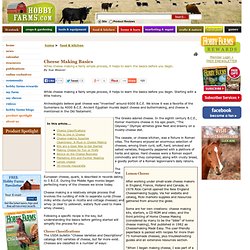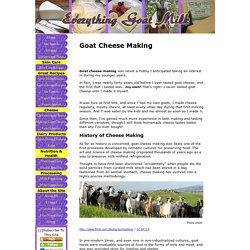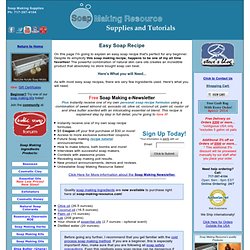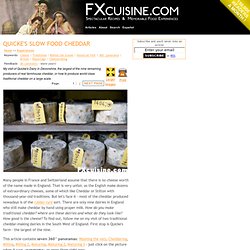

Cheese Making Basics - Hobby Farms - StumbleUpon. While cheese making a fairly simple process, it helps to learn the basics before you begin.

Starting with a little history. Archeologists believe goat cheese was “invented” around 6000 B.C.E. We know it was a favorite of the Sumerians by 4000 B.C.E. Ancient Egyptian murals depict cheese and buttermaking, and cheese is mentioned in the Old Testament. The Greeks adored cheese. The caseale, or cheese kitchen, was a fixture in Roman villas. The first European cheese, quark, is described in records dating to 3 B.C.E. Cheese making is a relatively simple process that involves the curdling of milk to separate curds (those milky white clumps in ricotta and cottage cheeses) and whey (a clear to yellowish, watery fluid used to make whey cheese).
Following a specific recipe is the key, but understanding the basics before getting started will simplify the process for you. Cheese Classifications The USDA bulletin “Cheese Varieties and Descriptions” catalogs 400 varieties of cheese, but far more exist. How to Make Homemade Cheese Making Recipes - StumbleUpon.
Goat Cheese Making Basics - StumbleUpon. Goat cheese making was never a hobby I anticipated taking an interest in during my younger years.

In fact, I was nearly forty years old before I ever tasted goat cheese, and the first that I tasted was...my own! That's right--I never tasted goat cheese until I made it myself. It was love at first bite, and since I had my own goats, I made cheese regularly, mostly chevre, at least every other day during that first milking season.
And it was eaten by the kids and me almost as soon as I made it. Since then, I've gained much more experience in both making and tasting different varieties, though I still think homemade cheese tastes better than any I've ever bought! History of Cheese Making As far as history is concerned, goat cheese making was likely one of the first processes developed by nomadic cultures for preserving food. Photo credit: Unlike cattle, goats can survive in arid, rocky regions with little forage, and are hardier and more resistant to diseases. Easy Soap Recipe - Step by Step Tutorial. On this page I'm going to explain an easy soap recipe that's perfect for any beginner.

Despite its simplicity this soap making recipe, happens to be one of my all time favorites! The powerful combination of natural skin care oils creates an incredible product that absolutely no store bought soap can beat. Here's What you will Need... As with most easy soap recipes, there are very few ingredients used. Here's what you will need: Free Soap Making e-Newsletter Plus instantly receive one of my own personal soap recipe formulas using a combination of sweet almond oil, avocado oil, olive oil, coconut oil, palm oil, castor oil and shea butter scented with an intoxicating essential oil blend. Olive oil (26.5 ounces) Coconut oil (16.5 ounces) Palm oil (10 ounces) Lye (209 grams) Your choice of essential oils (2.7 ounces - optional scent) Distilled water (20 ounces) Before going any further, I recommend that you get familiar with the cold process soap making method.
Get the Kit! Quicke's Slow Food Cheddar - StumbleUpon. Home >> Experiences My visit of Quicke's Dairy in Devonshire, the largest of the nine remaining producers of real farmhouse cheddar, or how to produce world class traditional cheddar on a large scale.

Many people in France and Switzerland assume that there is no cheese worth of the name made in England. That is very unfair, as the English make dozens of extraordinary cheeses, some of which like Cheddar or Stilton with thousand-year-old traditions. But let's face it - most of the cheddar produced nowadays is of the rubber tyre sort. There are only nine dairies in England who still make cheddar by hand using proper milk. This article contains seven 360° panoramas: Washing the vats, Cheddaring, Milling, Milling 2, Maturing, Maturing 2, Maturing 3 - just click on the picture when it says «panorama» or open them right now. If you're serious about cheddar, don't bother with the tourist traps at Cheddar in Somerset. Let's move inside and see what's cooking. Shovelling cheddar curds is hard work.